A woman from Iowa standing next to me on the granite rock outcrop at the westernmost point of Point Lobos State Park asked me if I still feel a special excitement as a local resident when I see whales around Monterey.
Even as a local here on the Monterey Peninsula, what we were seeing was a special occurrence I have only experienced a few times over the past decade. The sea around us was explosive with geysers of whale spouts happening in a dozen locations minute after minute. We were in the right place at the right time to witness the natural phenomenon of the annual gray whale migration along the central coast of California.
My first coastal gray whale sighting of 2013-14 season. Whale spout seen in center of the photo just below the sea and sky horizon. This is a whale perhaps a mile offshore.
Whale breath spray, a spout of warm air condensing over the surface of the cool ocean looks like a sea geyser on a calm water day. A small spout in the distance is typical of a coastal sighting during the gray whale migration. Few gray whales come really close to the shore.
Binoculars are usually needed to glimpse the whale’s body at the ocean surface. This was my first whale sighting of the season from shore and I did not even realize it until looking at my downloaded photos on the computer yesterday after a morning at Point Lobos State Park.
My camera was catching whale spouts in my ocean photos five minutes before I became aware of whale spouts with my eyes.
Allan Memorial Cypress Grove, Point Lobos State Park
Point Lobos State Park offers docent led tours in summer season and weekends. I arrived in time to take a tour of the Allan Memorial Cypress Grove at 10am on a Saturday. There were about a dozen visitors from places as far away as Singapore and Guam with USA mainland visitors from Iowa and North Carolina as some of the places I heard people state as their home base. I was the only local taking the tour. Still, I learned several new informational facts about Point Lobos State Park.
Point Lobos State Park on Google satellite map, located between Carmel-by-the-sea and Carmel Highlands, California.
California coastline from San Francisco to Los Angeles offers gray whale sighting opportunities from December to April.
One of my favorite trees at Allan Cypess Grove is a Monterey Cypress that sits atop a coastal granite rock by itself. I can’t call it the ‘Lone Cypress’ since that is a trademark and logo of Pebble Beach Corporation for the privately owned Del Monte Forest tourist attraction on the 17-mile drive of the Monterey Peninsula. I don’t know if there is a name for the Point Lobos Monterey cypress in the public park on the peninsula south of Pebble Beach.
My personal nickname for the tree is the ‘Alone Cypress’.
My focal point was the cypress tree and only later looking at the photo did I realize there is a whale surfacing in the background.
My photographs do not convey the awe one typically feels when spotting whale spouts on the sea. The knowledge that one is in the presence of some of the largest marine mammals on earth gives a feeling of humility that all our experiences as humans are just one small component of the natural ecosystems around us. Humans dominate land. Whales dominate the seas around us.
An adult gray whale is 40 to 50 feet in length and weighs about 70,000 pounds. Eastern Pacific gray whales, also called California gray whales, migrate from the Arctic waters of the Bering Sea to Baja California each year, a journey of about 5,000 miles one-way. Between mid-December and mid-January the majority of an estimated 22,000 gray whales are swimming along the California coast from Monterey to San Diego on the southern journey. Probably fewer than 10% of the migrating gray whales come close enough to the shore to be sighted from the coastline by spouts. The northern journey to the Arctic is when mother gray whales with their new born calves stay closer to shore.
Seeing a couple of whale spouts while standing on the shoreline is a treat. Seeing more than a dozen whales spotted in just a few minutes as the marine mammal early-start travelers head south to Mexico was an uncommon and fortuitous experience for me and other visitors to Point Lobos. The whale migration picks up and peaks around these shores through the weeks of late-December and mid-January.
Whale spotter census counters at research stations along the California coast only survey about 1,500 to 2,000 gray whales in the entire migratory season with hundreds of hours watching the sea as trained whale spotters with scopes. To see a dozen or more whales with numerous spouts visible in a 30 minute period was a truly special sight to see at Point Lobos.
The Los Angeles Chapter of the American Cetacean Society conducts a gray whale census from a viewing station on the cliffs of Palos Verdes. On Friday, December 13 they spotted 9 gray whales in a 2 hour period. This December is outpacing last year’s 16-year record high census in that southern California location. In December 2011 a record 191 gray whales were sighted in December and last year 182 gray whales were sighted heading south in December from the Palos Verdes station. So again, seeing more than a dozen whales from Point Lobos was a rare treat for me as a local and a lucky event for travelers visiting the park Saturday morning.
Palos Verdes is about 300 miles south of Point Lobos and gray whales can travel up to 100 miles a day during the migration south to Baja California. These gray whales seen Saturday off Point Lobos should be passing by the Palos Verdes spotting location sometime Tuesday to Thursday if they remain by the coast.
One whale swam by within about 300 yards off the coast of Point Lobos.
Over the past two weeks I had already stood at the rocky point of Allan Memorial Cypress Grove for around three hours on three different trips scouring the horizon of sea and sky through binoculars looking for whale spouts. The effort required three to four hours each trip to drive six miles south and hike a mile through Point Lobos from Highway 1 to the western front where the convergence of land and sea are positioned for ideal whale watching.
Looking for geysers shooting up from the sea as whales exhale their breath made my eyes weary after extended periods of binocular viewing. Pulling myself away after no sightings was always a slight disappointment, but Point Lobos is never a disappointing effort as a day trip.
Hearing sea lions bark in the distance, watching sea otters grooming or resting wrapped in green sea kelp, spotting black-tailed deer grazing and dozens of brown pelicans gliding so slightly above the water or soaring by in processional flight like the peloton of a cycling race at the shore’s edge were consolation prizes of hiking Point Lobos these past two weeks despite the lack of whale sightings.
One day there were dozens of porpoises in a feeding frenzy visible several hundred yards offshore, yet no whale sightings.
Sea Otter Raft is the name for a group of sea otters. This group of otters has six adults and definitely two and possibly three pups I counted in my collection of photos. This is the largest raft of sea otters I have seen in several years outside of Moss Landing Harbor, a gathering place for sea otters at the center coast of Monterey Bay about 25 miles north of Carmel on Highway 1. The top center otter has a pup standing up on mom’s chest. I have not seen this behavior before. Besides the whales, the tourists visiting Allan Cypress Grove witnessed this special sighting too.
I have commented on my blog this year on pieces about the Monterey Peninsula that the first nine months of 2013 had me concerned that sea otters were dying off since I had far few sightings locally than in years past. Then, the annual sea otter census published in September stated the population was slightly up at 2,941 sea otters along the California coast. In the past month I have seen more sea otters along the coast of the Monterey Peninsula than anytime in the past two years. A sea otter count at Point Lobos last week recorded around 90 otters around the waters of the State Park. This is nearly double the count from the summer months.
The sea around us is a major attraction of being here on the Monterey Peninsula. Scenic beauty in the pine trees, granite rocks, wooded and barren hills and sand beaches beside the Pacific Ocean is the undeniable draw to a traveler passing through these parts and to those of us living here.
Big Dome Cove Point Lobos State Park. Cypress Point, Pebble Beach seen in the distance is another great point for whale watching at the westernmost point of the Monterey Peninsula.
When here at home I try and use my time to enjoy the unique surroundings of central coast California and appreciate the cycle of life inhabiting these parts. The seasonal variations of life around the central coast is an aspect of the Monterey Peninsula that takes time, in my case many years, to observe, appreciate and internalize the natural cycles that shape our experiences as visitors and locals.
California sea lions are climbers and hundreds have scaled these rocks off Point Lobos. The highest of these rocks are about 50 feet above the sea surface.
*****
Ric Garrido of Monterey, California is writer and owner of Loyalty Traveler.
Loyalty Traveler shares news and views on hotels, hotel loyalty programs and vacation destinations for frequent guests.
Follow Loyalty Traveler on Twitter and Facebook and RSS feed or subscribe to a daily email newsletter of Loyalty Traveler blog posts.


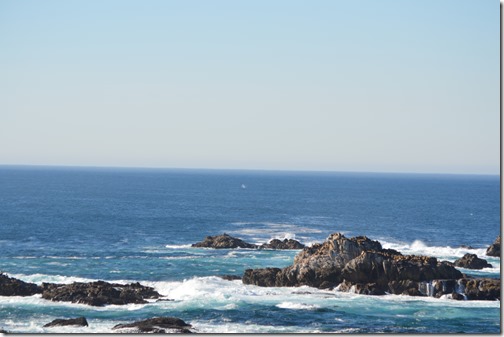


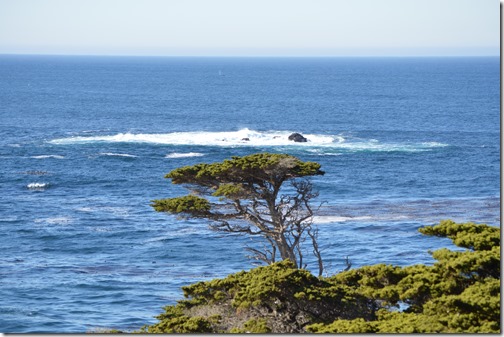
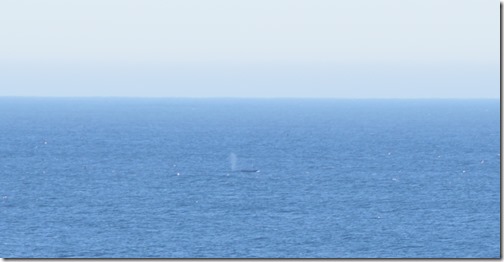
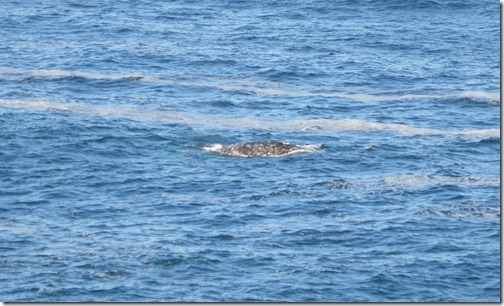

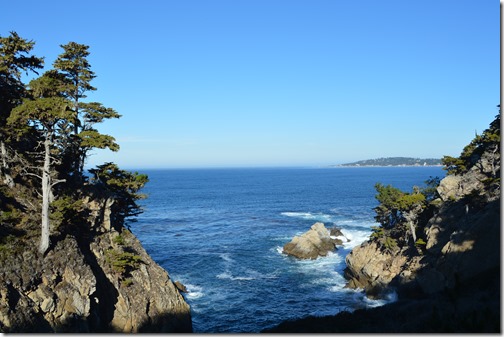


1 Comment
Comments are closed.